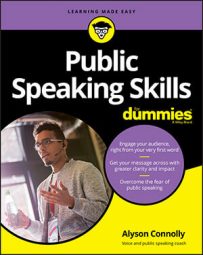You’ve actually got two palates. One is the hard palate, which extends from the back of your teeth back along the middle of the roof of your mouth. That’s the one your tongue is always touching. The soft palate, meanwhile, is behind your hard palate, and pretty hard to get at with your tongue. Its job is to close off the nasal passages during swallowing. When it lowers, it lets you make the nasal sounds of ng, n, and m. These sounds are meant to vibrate through your nose. For a non-nasal sound, the soft palate at the back of the throat stays up there, allowing for the breath to enter more fully in the mouth.
How can you tell if you’ve got this nasal issue? Start by saying something, literally any sentence. Now put your thumb and another finger gently on each side of your nose. Then pinch your nose and repeat the same sentence. Do you sound different? If you sound drastically different, it’s because that sound that is supposed to be coming through your mouth was coming through your nose. Guess what: You’ve got a sound that’s nasal.Exercises: Nix Nasality
How do you avoid sounding too nasal? You need to send air and vibration through your mouth as you speak, not through your nose. I know, it’s weird thing to try to do. Plug your nose and practice speaking through your mouth without your nose.
Exercise 1: Open your mouth as wide as you can. Pretend you’re chewing a mouthful of crackers. (Be careful that when you open your mouth you’re not creating tension anywhere else on your body.) Once you have a wide mouth, switch between the nasal sound and non-nasal sound (now that you know the difference). Exaggerate your nasal sound even more when you say, “I am happy to speak with you today.” Really feel the vibrations buzzing in your nose. Then drop your jaw and open your mouth, visualizing the sound at your breastbone, and repeat the sentence again. Move between the nasal and the dropped sound and notice the difference.
Exercise 2: To see the opening and closing of the soft palate, take a look in the mirror. Open your mouth wide and yawn. Exercise your soft palate to see how it works by breathing out on a K sound.
Exercise 3: Breathe in and on the exhale say, “Aaah.” All the air should come from your mouth. Then breathe in again and on the exhale say, “Aaah” from your nose — some of the sound will come out of your nose, then into a long nasal ng sound where all the sound comes from your nose. Close your eyes and do this complete round a few times. Can you hear the difference?
Exercise 4: Exaggerate your nasal sound even more. Think of Janice on Friends or Fran Drescher in The Nanny while you’re saying, “I am happy to speak with you today.” Really feel the vibrations buzzing in your nose. Then drop your jaw, open your mouth, visualize the sound at your breastbone, and repeat the sentence again. Move between the nasal and the dropped sound and notice the difference.

